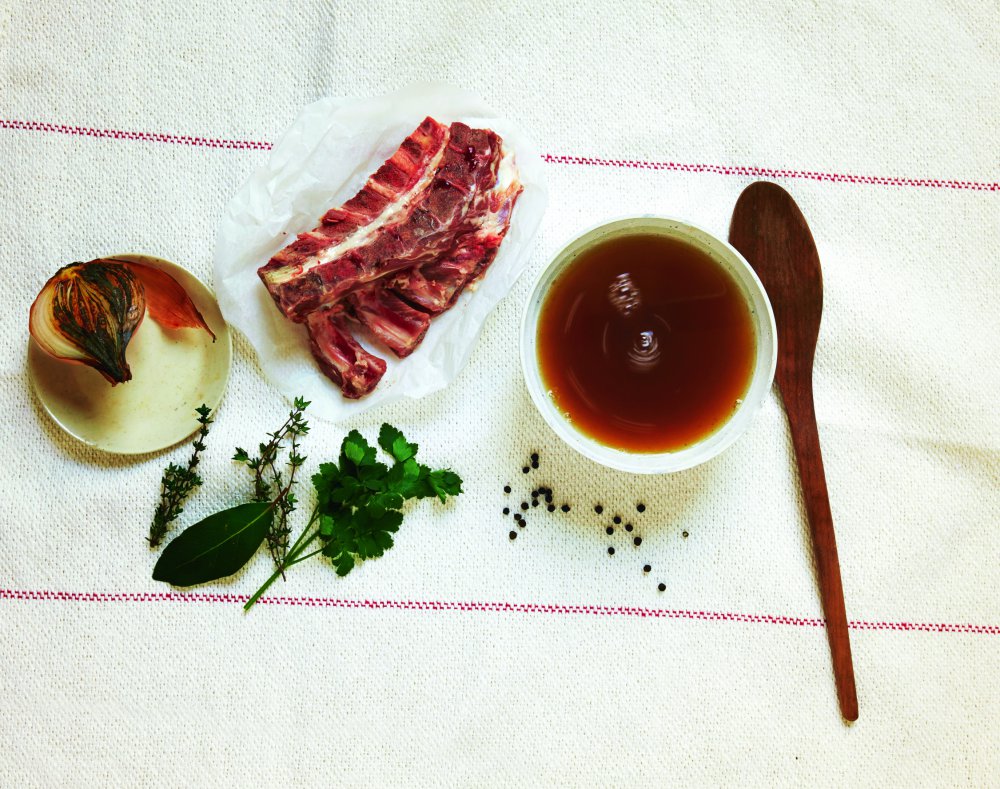Who could have predicted that our next culinary obsession would be broth? And not just any: the broth of meat and bone.
In question ? On the one hand, the Paleolithic diet, which emulates: modeled on the diet of our hunter-gatherer ancestors, it promotes protein intake. On the other hand, the need to reconnect with a traditional food, which everyone knows, such as soup broth and those, now customary, Asian cuisine. Result, worldwide, a new type of restaurant was born: the broth bar, as in New York (Broth Bar, Brodo), London (Bone Tea) and Berlin (Broth Bonafide). And, among booksellers, books are devoted to bubbling recipes.
A successful return for this dish "grandmother".
Why is the broth so good?
If the broth is in vogue, it is also because it does not make you fat and it would be good for the health. What do the scientists say? They admit their ignorance.
According to Hervé This, chemist and co-inventor of molecular cuisine, "the composition of meat broths remains poorly known, and the mechanisms of their formation remain mysterious" .
On the other hand, the components of meat and bones are better known. Assuming that these migrate to the broth, we can deduce possible benefits. Thus, rich in nutrients and collagen (the same that plumps a fine line into an injection), the broth facilitate digestion, reduce the risk of inflammation, solidify bone and joints, calm nerves, regulate hormonal imbalances and increase male fertility.
Only problem: slow cooking (up to twenty-four hours for bone broth). But it provides less than 10 Cal / 100g when it is completely defatted.
Bouillon: a preparation in the rules of the art
- Take water, aromatic vegetables, add meat (or just bone) or fish (head and bones), herbs and spices.
- Cook between 30 minutes and 3 hours on low heat and you get some kind of infusion that remains to be filtered (like chamomile or verbena). During this cooking, the active ingredients of the solid elements migrate to the liquid, perfume it, color it, enrich it with nutrients.
- Cut the aromatic elements (carrot, onion, mushroom ...) into small regular pieces to multiply their contact surface with the liquid and optimize the transmission of perfumes. To rid them of the aggressive tastes they develop in the raw state, sweat them over low heat for a few minutes in a little fat.
- Once the broth has simmered, let it cool without moving, so that the impurities fall to the bottom.
- Then carefully take the ladle broth by ladle and filter it through a gauze, in order to obtain a limpid consummation.
- If you have to add citrus or herbs, do it at the last moment, just before the service.
How to accommodate his broth?
In principle, a broth is used as a starter, instead of a soup, alone or enriched with vegetables, shellfish, fish, meatballs, pasta, sausage ... But he knows many other uses in the kitchen, where he brings its complexity of flavors. You will use poultry broth to deglaze the juice of a roast or steak, vegetable broth or veal for cooking pasta or rice, which will gorge and become tasty (this is the risotto principle), a fish bones broth to prepare a white wine sauce to serve with roasted salmon, or a vegetable broth and aromatic poultry to replace the cooking water of a soup and boost its flavors . Cooking can be long (3 hours when it is based on bone and beef), it is better to prepare a large amount and freeze in small volumes: ice cube tray and / or water bottles of different sizes.
If you continue cooking past its end and you leave a meat broth strongly reduce, after cooling, you will find that it is taken in jelly. This is yet another way to serve it, in summer, mixed with crisp cooked seasonal vegetables and fresh herbs.
To give it taste, do not use the noble part of vegetables: use leek green or green onions that you usually discard, carrot or celeriac peels, or stems of herbs. keeping the leaves for another use.
Finally, after having roasted and eaten a chicken, crush its carcass and use it to make a broth inexpensively by adding some giblets gleaned from the butcher.


